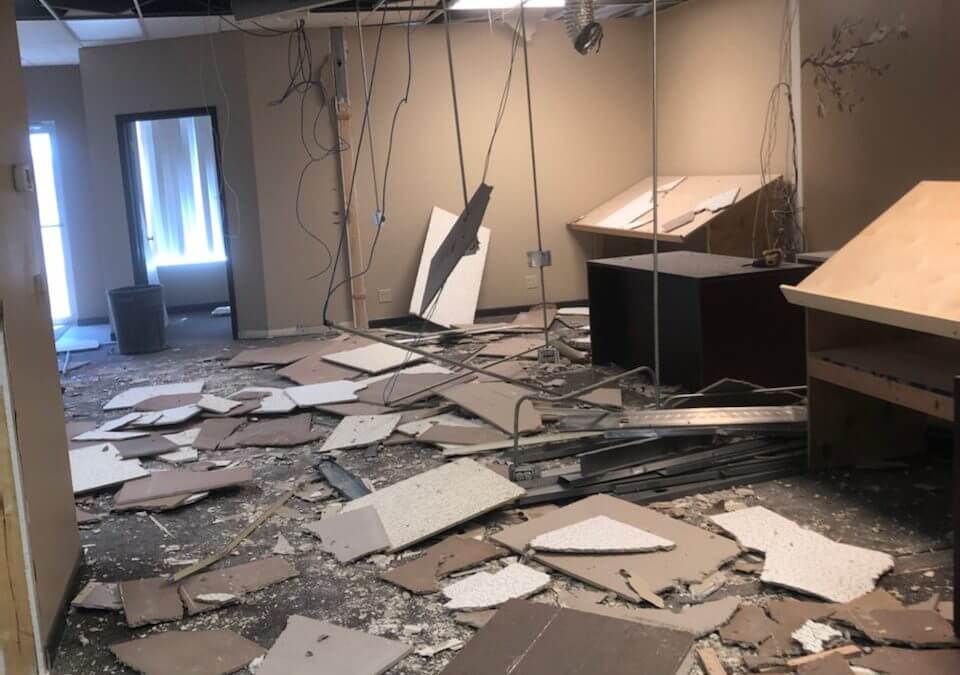Office demolition is a crucial process often undertaken for renovation or relocation purposes. It involves the systematic dismantling and removal of structures and materials within an office space.
Unfortunately, there are several myths and misconceptions surrounding office demolition that can lead to misunderstandings and hesitation when it comes to implementing necessary changes.
In this article, we will debunk five common myths associated with office demolition and shed light on the truth behind them.
Myth 1: Office demolition is a simple and quick process
The myth that office demolition is a simple and quick task is far from the truth. In reality, office demolition is a complex process that needs meticulous planning, coordination, and execution.
Factors like space size, structural elements, and hazardous materials greatly impact the duration of demolition. Rushing without proper evaluation and preparation can result in expensive errors and safety risks.
Myth 2: Office demolition is only necessary for outdated or damaged spaces
Office demolition is not only necessary for outdated or damaged spaces; businesses choose demolition for various reasons. As companies’ needs evolve, office spaces must adapt.
Demolition enables layout reconfiguration, integration of new technologies, and the development of collaborative environments, fostering productivity and employee morale.
Embracing office demolition as a means of adaptation helps businesses stay competitive and meet their workforce’s changing demands.
Myth 3: Office demolition is expensive
Despite the common perception of office demolition being excessively costly, there are ways to manage expenses effectively.
While costs vary based on project size and complexity, proper planning, obtaining multiple quotes, and considering cost-saving alternatives like salvaging and repurposing materials can help reduce overall demolition costs. It’s crucial to consider the long-term benefits and return on investment that an improved office space can offer.
Myth 4: Office demolition leads to excessive waste and is environmentally unfriendly
Concerns regarding waste generation and environmental impact during office demolition can be addressed through responsible practices. Sustainable demolition methods prioritize recycling and repurposing materials, minimizing waste.
Salvaging items like furniture and fixtures for reuse conserves resources and benefits the environment. Working with contractors who prioritize eco-friendly practices ensures compliance with environmental regulations and standards during the office demolition process.
Myth 5: Office demolition disrupts business operations
A common fear associated with office demolition is the disruption it may cause to business operations. While some level of disruption is inevitable, proper planning and coordination can help minimize the impact.
Communication with employees and stakeholders is crucial to managing expectations and maintaining productivity.
Establishing a detailed timeline, creating temporary workspaces, and implementing flexible work arrangements can help mitigate downtime and ensure a smooth transition during the demolition process.
Conclusion
Office demolition is a significant undertaking that requires dispelling myths and making informed decisions. It involves careful planning, professional assistance, and environmental consideration.
Embracing the benefits of office demolition, like improved functionality and productivity, leads to a successful workspace transformation. Seeking advice from experienced professionals ensures a smooth transition to a revitalized office environment.
Office demolition may seem challenging. But if you employ Deft Demo’s expert commercial demolition contractors in Sydney, it becomes a piece of cake for you. As a leading demolition service provider, we offer best-in-class, comprehensive commercial demolition services that take away all the hassle from you. Contact us to learn more and get a quote.

